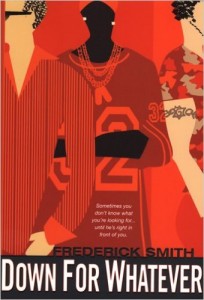Published in: January-February 2006 issue.
 Down For Whatever
Down For Whatever
by Frederick Smith
Kensington Books. 281 pages, $14. (paper)
THE BIBLE for writing quality fiction advances the following three commandments: avoid clichés, develop a distinctive voice, and show rather than tell. Occasionally, there comes a novel that stands in direct opposition to these commandments and still manages to render a decent narrative. Frederick Smith’s debut title, Down for Whatever, is not such a novel.







